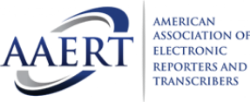Why Trial Presentations May Greatly Impact Your Courtroom Approach
Why Trial Presentations May Greatly Impact Your Courtroom Approach
Blog Article
The Power of Visuals in Trial Presentations for a Winning Debate
The combination of visuals in test discussions has arised as a critical aspect in effectively interacting intricate arguments to jurors. By making use of various kinds of visual aids-- be it diagrams, pictures, or animations-- lawyers can improve understanding and retention, eventually forming the court's perception of the situation. This method not just clarifies complex stories however additionally establishes an emotional vibration that can influence decision-making. As we explore the nuances of this method, it comes to be important to think about exactly how specific sorts of visuals can make a considerable distinction in test end results. What practical strategies might attorneys employ to optimize this potential?
Significance of Visuals in Trials
In many lawful settings, visuals play an essential duty in enhancing the performance of trial discussions. The integration of visual aspects can substantially influence jurors' understanding and retention of intricate information, thus shaping their perceptions and decisions. Visuals, such as charts, layouts, and pictures, can streamline intricate stories, making them more accessible and engaging.
Furthermore, the human brain procedures aesthetic information more efficiently than message, which highlights the importance of including visuals right into legal debates. By equating thick legal concepts right into aesthetic styles, lawyers can assist in clearer interaction, guaranteeing that key factors are not overlooked throughout trials.
In addition, visuals serve to involve jurors on an emotional degree, fostering a link to the case that words alone might fall short to accomplish. The strategic use of visuals can stimulate empathy, motivating jurors to consider the human facets of the instance.
Ultimately, the value of visuals in tests depends on their capacity to boost clearness, boost juror engagement, and strengthen the story being offered. This potent combination is crucial for crafting convincing debates that resonate with jurors and influence the end result of lawful proceedings.
Kinds of Visuals to Make Use Of
Effective trial presentations can greatly take advantage of a range of aesthetic devices that deal with different elements of the instance. trial presentations. Utilizing representations and graphes can properly damage down complicated details, making it more digestible for jurors. Flowcharts can show the series of events, while bar graphs may succinctly compare relevant information factors.

Animations and simulations can likewise play an essential duty, specifically in cases entailing technical information or elaborate circumstances. These visuals can dynamically represent procedures or activities, providing clearness and involvement that fixed images may not accomplish.
In addition, infographics incorporate message and visuals to sum up important info successfully. They can offer timelines, data, and substantial instance factors in an aesthetically enticing fashion, making it much easier for jurors to adhere to the disagreement.
Enhancing Understanding and Retention

Enhancing understanding and retention throughout trial presentations is essential for ensuring that jurors realize the crucial components of a situation. Visual help offer as powerful tools hereof, translating intricate details into easily absorbable styles. By utilizing graphes, diagrams, and infographics, lawyers can streamline elaborate information and highlight bottom lines that might otherwise see here now be forgotten.
Research studies have revealed that individuals preserve info significantly much better when it exists aesthetically. This is especially relevant in a trial setup, where jurors may be bewildered by the volume of proof and testimony. By tactically incorporating visuals, lawyers can direct jurors' interest to one of the most important aspects of the situation, reinforcing their understanding and memory of the product provided.

Producing Engaging Discussions
Captivating jurors' interest during test discussions is necessary for conveying look at this website an engaging narrative. Engaging discussions utilize visual components to develop an unforgettable experience that resonates with jurors. The calculated use of graphics, animations, and video clips can elucidate complicated details, making it much more obtainable and relatable.

Additionally, integrating storytelling methods can boost engagement. Presenting proof in a sensible series that develops psychological allure enables jurors to get in touch with the product on a personal degree. Varying presentation layouts, such as incorporating brief video clips or interactive aspects, can likewise receive interest and attention throughout the trial.
Eventually, an interesting presentation fosters an extra extensive understanding of the instance, allowing jurors to much better value the debates being provided and bring about a much more favorable result.
Study and Success Stories
Countless case research studies highlight the substantial impact of visuals in trial presentations, showing their capacity to influence juror perceptions and website here eventually the end results of instances. As an example, a significant situation entailing an injury claim showed exactly how the usage of a 3D computer animation of the crash scene clarified complex details. Jurors reported feeling more informed and empathetic, considerably persuading their decision for the plaintiff.
In another instance, a business litigation case used infographics to existing monetary data and timelines, making elaborate information available. The visual representation made it possible for jurors to realize the subtleties of the situation better than spoken explanations alone. trial presentations. Consequently, the court returned a judgment that surpassed the client's expectations
In addition, a criminal protection situation employed pictures and video clip evidence to establish an alibi. The engaging visuals not only helped in developing uncertainty however also reverberated emotionally with jurors, leading to a pardon. These success tales underscore the requirement of incorporating visuals right into trial discussions, as they improve understanding, retention, and ultimately, the convincing power of lawful debates. The calculated use visuals is undeniably transforming the landscape of test advocacy.
Final Thought
In final thought, the calculated unification of visuals in trial presentations dramatically boosts jurors' comprehension and retention of complex info. Involving discussions, sustained by engaging instance studies, show the extensive influence that visuals can have on persuasive communication.
Report this page